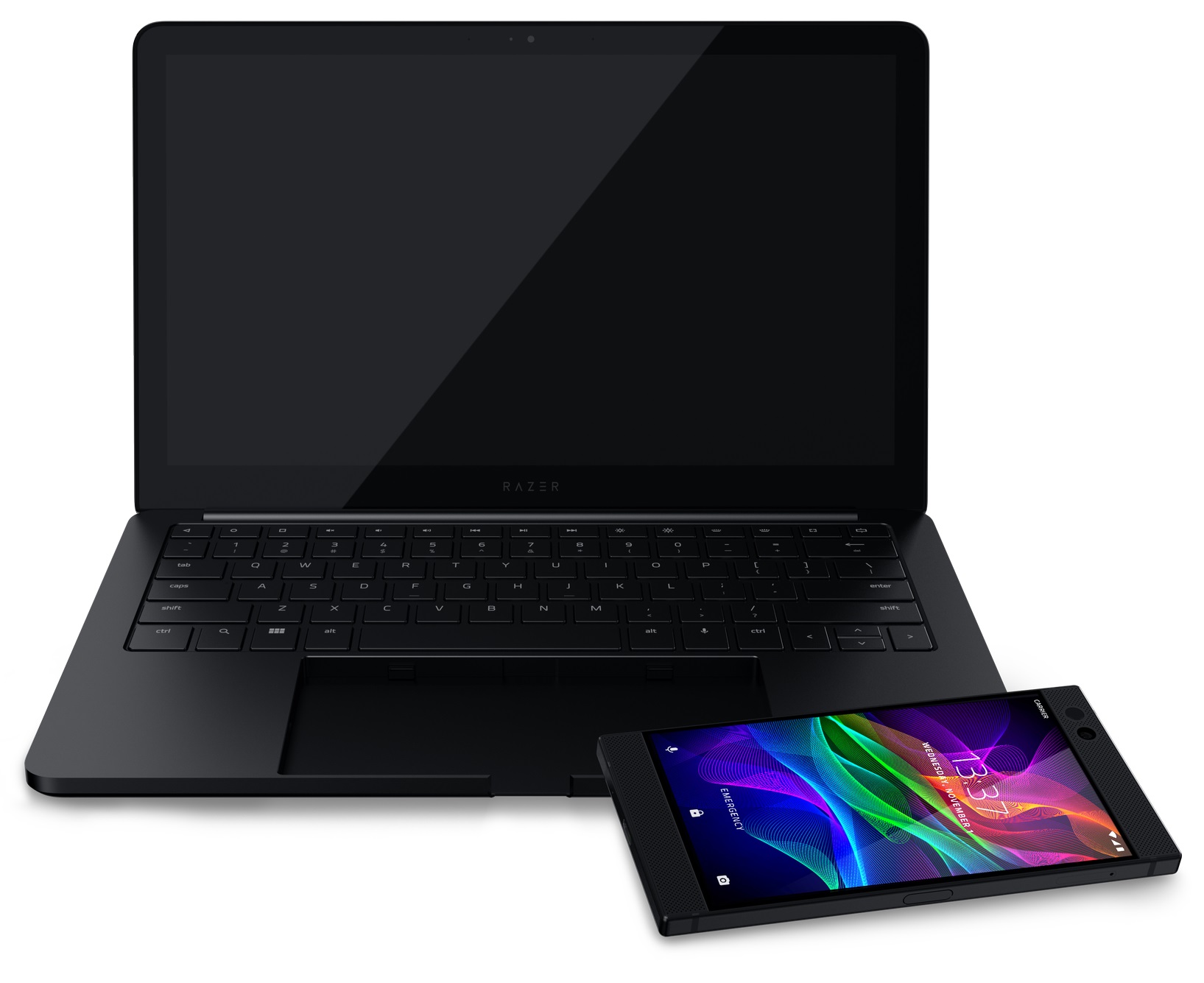A Phone, A Laptop: Razer's 'Project Linda' Prototype At CES
LAS VEGAS, NV -- Razer’s affinity for concept products with ladies’ names continued unabated at CES 2018 with Project Linda, a “dumb” clamshell laptop concept that uses the computing power of the Razer Phone as both the heart of the system and in place of the touchpad.
For Real This Time, Again
We’ve seen similar concepts before, as far back as Mobile World Congress 2015, but for a miscellany of reasons, they haven’t found much of a foothold in the market. In Razer’s eyes, perhaps the time has come (er, again, for real this time).
We’re accustomed to Razer’s annual fun, brash CES prototypes turning into vaporware, and sometimes what the company shows us are barely functioning prototypes. Although it’s true that the four Project Lindas Razer had on hand in its suite this year are indeed prototypes, they were all functioning, at least to an extent. At least two were fully functional, although Razer is still deciding which features to add, subtract, or tweak before it can make a final product.
A New Hope
Suffice it to say, though, that of all Razer’s CES concepts, this one seems the most likely to become a Real Thing. The key is the simplicity of the design and the attention to detail. (We can attest to the former; as to the latter, it appears that Razer has already paid close attention to the details.) Simply put, the Razer Phone, like all modern high-end smartphones, packs an impressive amount of horsepower. It also has a stellar display, USB Type-C connectivity, and dual front-facing speakers.
The Project Linda laptop is basically just a monitor, keyboard, storage, ports, and power supply dressed up in a 13.3" Razer Blade Stealth-ish chassis. The phone actually functions as both the touchpad (oh, right, we suppose that was an obvious choice) and the audio system (thanks to those two front-facing speakers). You can also connect a mouse if you want a little more control.
To dock the Razer Phone into the laptop, you simply nestle it into the slot where the touchpad goes and press a button on the keyboard, which makes a USB Type-C dongle pop out and poke itself into the Razer Phone’s port. This happens out of view of the user, but you can see it work if you pull the phone out and press the button. It also makes a satisfying whirrrr sound.
Androided
Get Tom's Hardware's best news and in-depth reviews, straight to your inbox.
Obviously, Project Linda uses Android as its operating system. For its desktop UI, Razer tapped Sentio Desktop and made some of its own custom modifications. There’s even a Chroma configurator for the RGB lighting (of course it has RGB lighting), although it’s by no means as detailed as the desktop Synapse software.
Its keyboard has dedicated Android buttons, on the top left, and Razer cleverly placed an app launcher button where you’d normally find the Windows key. The upper right side of the keyboard has a fullscreen key and the aforementioned docking button. It also lets you perform Alt-Tab.
What’s In The Clamshell
What’s inside a laptop that has no CPU, GPU, or RAM, nor an embedded touchpad? In Razer’s case, there’s supposed to be 200GB of internal storage, as well as a 3.5mm audio jack, USB-A port, USB-C port (which is occupied by the power adapter plug in), a 720p webcam, and dual-array microphone. There’s also a 53.6Wh internal battery.
There were different displays on the various Project Linda prototypes, including at least one FHD panel, but it’s clear (and the press materials indicate) that the goal is a quad HD touchscreen at 120Hz.
The body is a CNC’d aluminum that’s 15mm thick (Razer had to actually add a tiny bit of Z-height so the bottom panel was flush with the Razer Phone) and weighs 1.25kg.
It’s Always About The Price
We always ask about pricing when we see new products, and Razer’s answers are almost invariably unsatisfying--either “we don’t know yet” or a number that’s eyebrow-raisingly high. In the case of Project Linda, its the former, which is to be expected for a prototype product.
However, if Razer can keep the cost reasonable, Project Linda becomes rather compelling. You have to think about your computing loadout: for many, that consists of a smartphone and a laptop. Together, that’s easily $2,000. Razer’s play here is that you already have the Razer Phone, which is $700. If the clamshell cost another $300, that would be just $1,000 for what amounts to, functionally speaking, a smartphone and a laptop. Granted, you may want more laptop performance than the Razer Phone can provide, but for day-to-day tasks, traveling professionals, and others, Project Linda may suit their needs perfectly.
However, given what Razer has stated (and hopes) to put into Project Linda, not to mention its general avoidance of cost-saving compromises, we suspect that it will exceed that $300 mark, although perhaps not by too wide a margin.
Funny enough, Project Linda packs the same Qualcomm 835 SoC as the new line of slim, always-on laptops, and in a way it’s also, then, a Qualcomm-powered laptop. Or at least a prototype of one.
Seth Colaner previously served as News Director at Tom's Hardware. He covered technology news, focusing on keyboards, virtual reality, and wearables.
-
-Fran- Just like I did like the Asus prototypes (and product) back in the day, I like Linda as well.Reply
I'm actually eyeing the Razer Phone, but it has a nasty markup here in the UK. I am still waiting for it to go down a bit in price.
Cheers!



